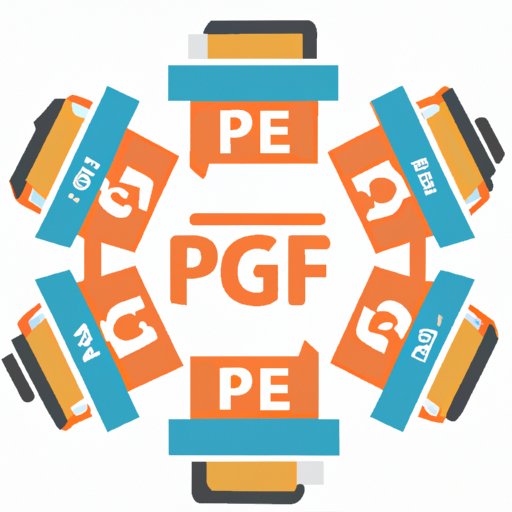
Converting a JPEG to PDF: A Comprehensive Guide
Converting a JPEG image to a PDF document may seem like a daunting task, but it’s a simple process that can be completed in just a few steps. In this guide, we’ll explore different methods to convert a JPEG to PDF, including using online converters and specialized software. We’ll also address common questions and issues that arise during the conversion process, so you can efficiently transform your images into high-quality documents.
A Step-by-Step Guide
The process of converting a JPEG to PDF can be broken down into six simple steps:
Step 1: Choose Your Conversion Method
There are various methods to convert a JPEG to PDF, including online converters and specialized software. The method you choose depends on your preferences, image quality, and the number of images you need to convert.
Step 2: Upload Your JPEG Image(s)
If you’re using an online converter, you’ll need to upload your JPEG image(s) to the website. For software-based conversion, you’ll need to import your file(s) into the program.
Step 3: Adjust Image Quality
If your image isn’t of high quality, consider adjusting the resolution and brightness before converting it to PDF. This step will ensure your image quality transfers correctly when you convert it.
Step 4: Choose Output Settings
Select the PDF file type and orientation you want, as well as any compression settings that can reduce file size.
Step 5: Convert Your JPEG to PDF
Click on the “Convert” button to start the conversion process. This step may take a few minutes, depending on the size of your file and your Internet connection speed.
Step 6: Save Your PDF File
Once the conversion process is complete, download or save your brand new PDF file to your computer.
Comparative Approach
There are various options for converting JPEG to PDF, and each tool comes with its pros and cons. Here’s a rundown of some popular methods:
1. Adobe Acrobat
Adobe Acrobat is a robust desktop application for creating and editing PDFs. It offers a high-quality output and advanced features such as customizable security settings and OCR capabilities. However, its high price point may not be affordable for everyone.
2. Online Converters
Using online converters like Smallpdf, Zamzar, and online-convert.com is an accessible option for anyone with an Internet connection. It’s beginner-friendly and doesn’t require any installation. However, output quality may suffer, and some sites may have upload limitations.
3. JPEG to PDF Converter
Designed to convert JPEGs to PDFs exclusively, JPEG to PDF converter software offers easy and quick solutions. However, it typically offers limited features beyond conversion, and they may have file size limitations. Some options to consider include the iLovePDF, UniPDF, and JPEG to PDF software.
Using Online Converters
Online converters are a popular choice for quickly converting JPEGs to PDFs. Here are some advantages to keep in mind:
1. Easy to Use
Most online converters have an intuitive user interface that’s easy to use and doesn’t require software installation.
2. Fast and Efficient
The conversion process is fast and efficient, even for large files.
3. No Special Skills Required
Very little computer knowledge is required to use an online converter. Beginners can easily use it to convert their files.
However, online converters do have some disadvantages. Uploaded files may be lost, data can be stolen, and they may require money to obtain full functionalities.
Specialized Converters
If you need to regularly convert JPEG files to PDFs and want software that’s specialized for the task, you may consider purchasing dedicated software. Here are some options:
1. iLovePDF
iLovePDF is a cloud-based tool that can convert multiple JPEG files to PDFs in just a few clicks. The software offers other features like merging and splitting PDFs, adding watermarks, and compressing files. The software offers premium account options.
2. UniPDF
With UniPDF, you can convert many image file formats to PDF. It’s easy to use and supports batch processing to save time. Additionally, it converts files without losing the original text, layout, or images, making it a great choice for converting scanned documents.
Frequently Asked Questions
Why Convert JPEG to PDF?
PDF is a popular file format that’s widely compatible with various devices and operating systems, making it suitable for sharing documents. It’s secure, easy to send, and can preserve the layout, structure and color of the original document.
Is There a Limitation on File Size When Converting JPEG to PDF?
Most software and online converters have file size limitations. Check the specifications of your chosen conversion method to ensure your JPEG file doesn’t exceed the size limit.
Can I Convert Multiple JPEGs to a Single PDF?
Yes, you can use specialized software like Adobe Acrobat or online converter sites like Smallpdf to convert multiple JPEG files to a single PDF document.
Can I Convert JPEGs to a High-quality PDF?
If your JPEG file is of high quality, the PDF file will also have a similar high-quality output. However, some compression settings can affect image and text quality. Choose the output settings carefully to get the desired result.
Troubleshooting
If you face any issues while converting JPEG to PDF, try the following solutions:
1. Check Your Internet Connection
An unstable Internet connection can cause an error while uploading or downloading files. Test your connection and try again.
2. Check the File Size
Most converters have file size limits. Check the file size before uploading to prevent issues.
3. Check Output Settings
Make sure you have selected the correct orientation and resolution settings before converting.
Conclusion
Converting JPEG to PDF can be done quickly and easily using a variety of methods. Whether you choose online converters or specialized software, the process is user-friendly and requires only basic computer skills. Consider advantages and disadvantages, file sizes, and output quality when selecting a conversion tool. Remember, with the right approach and steps, you can transform all your images into functional, high-quality PDF files.





